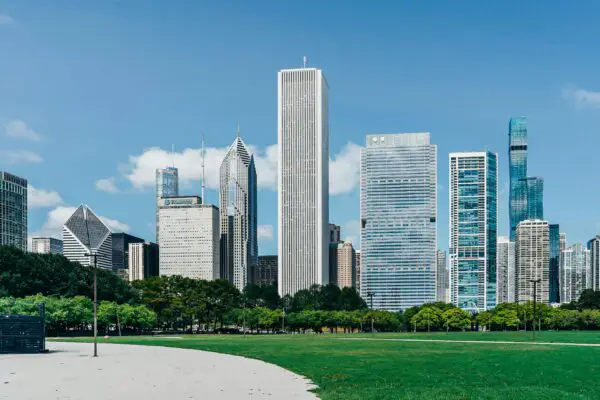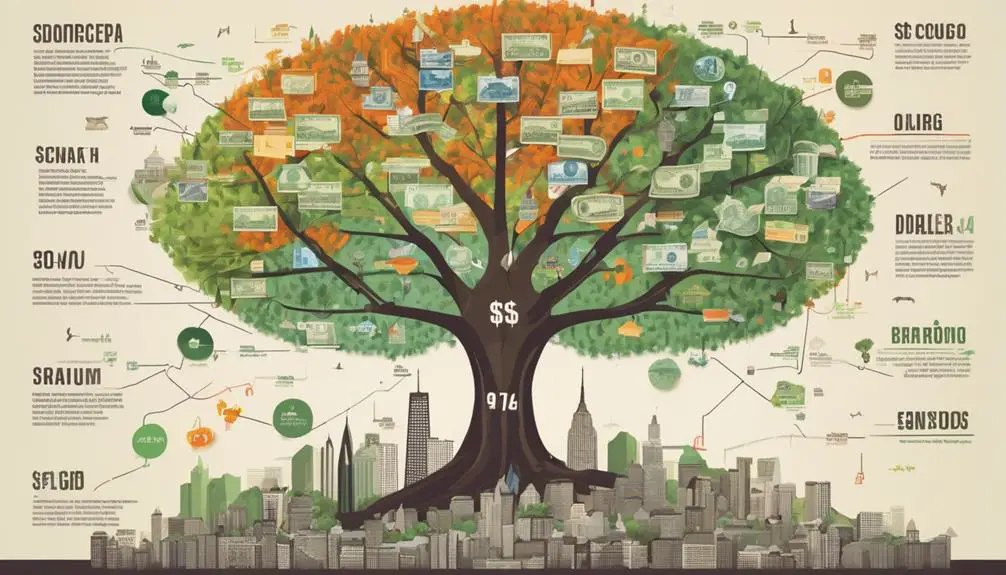City breaks are a rising trend in American travel, offering diverse experiences in a short timeframe. In 2024, 67% of Americans plan to travel by air, favoring top destinations like New York City, Los Angeles, and Chicago. Travelers are budgeting an average of $5,300 for these trips, with an increasing interest in luxury, “bleisure,” and slow travel. Despite economic concerns, 85% of Americans plan out-of-state trips, using travel rewards to offset costs. The appeal of city breaks remains strong, reshaping the future of domestic tourism.
The Allure of the City Break

The appeal of city breaks lies in their ability to offer a diverse array of experiences packed into a compact timeframe. From the bright lights and bustling streets of New York City to the sun-drenched charm of Los Angeles, these urban escapes provide travelers with a tantalizing glimpse into the heart of America’s most iconic metropolitan areas.
According to the latest industry data, a staggering 67% of Americans plan to travel by air in 2024, with city breaks playing a significant role in this surge of domestic tourism. The top destinations for these urban getaways include the perennial favorites of New York City, Los Angeles, Chicago, Las Vegas, and San Francisco.
Spending Habits and Evolving Preference
As the demand for city breaks has grown, so too has the willingness of Americans to invest in these experiences. The average person is now budgeting a remarkable $5,300 for travel in 2024, with a notable increase in the number of individuals willing to spend $2,001 or more on spring break trips alone.
This heightened spending can be attributed to a variety of factors, including a desire for luxury and premium experiences, the blending of business and leisure travel (the “bleisure” trend), and the strategic use of travel rewards and loyalty points to offset costs.
However, the modern city break traveler is not solely focused on extravagance. There is a growing trend towards “slow travel,” which emphasizes quality over quantity and a deeper engagement with local culture and communities. Amenities like fast Wi-Fi, king-sized beds, and smart TVs are also becoming increasingly important, as travelers seek to stay connected and comfortable during their urban adventures.
Economic Factors and Resilient Demand
The current economic climate has undoubtedly had an impact on travel plans, with 54% of Americans citing the economy as a factor in their 2024 travel decisions. To mitigate the effects of rising costs, a significant portion of travelers (58%) plan to leverage travel rewards and loyalty points to cover expenses for city breaks and other trips.
Despite these economic pressures, the demand for city breaks remains remarkably resilient, with 85% of Americans still planning to travel out of state in 2024. This unwavering enthusiasm for urban exploration underscores the enduring appeal of these dynamic destinations and the central role they play in the American travel landscape.
Luxury Vs Budget City Breaks
Whether you’re splurging on a luxury vacation or pinching pennies for a budget-friendly trip, understanding what each type of city break involves in terms of cost and experience in the USA is essential.
Luxury city breaks often mean staying in five-star accommodations, dining at gourmet restaurants, and indulging in high-end shopping. You’re looking at a cost of a few thousand dollars minimum.
On the other hand, budget city breaks involve more affordable accommodations, such as hostels or budget hotels, eating at cheaper eateries, and engaging in low-cost or free activities. You can expect to spend a few hundred dollars.
Impact of Season on Costs

The season in which you choose to visit a city in the USA can greatly impact your travel costs. Let’s say you opt for a summer break in Miami or a winter getaway in Aspen, be prepared to cough up more dough. These cities are at their peak during these seasons, meaning higher demand and increased prices.
The same goes for popular holidays like Thanksgiving or Christmas. On the other hand, visiting in off-peak seasons can bag you substantial savings. For instance, a fall trip to Miami or a spring visit to Aspen can help cut costs.
Saving Tips for City Breaks
Looking to keep your wallet happy on your next city break in the USA? Here are some savvy tips to help you cut corners without sacrificing the quality of your trip.
To begin with, consider off-peak travel. You’ll find cheaper rates and fewer crowds.
Next, use public transportation or walk when possible. It’s not only cheaper, but also a great way to explore.
Third, eat where the locals do; they know the best spots with reasonable prices.
Also, opt for free activities like visiting public parks, or museums with ‘pay what you wish’ policies.
Lastly, book your accommodation in advance to grab early bird discounts.
Future Trends in City Break Spending
As you plan your future city breaks, it’s important to be aware of emerging trends in spending that could reshape your travel experiences. Experts predict a shift towards more sustainable and experiential travel. You might find yourself spending less on traditional hotels and more on local, eco-friendly accommodations. Similarly, instead of splurging on high-end restaurants, you might be investing more in local food experiences that connect you to the city’s culture.
There’s also a trend towards digital nomadism and extended city breaks, so you may spend more on co-working spaces and less on typical tourist attractions. Keep these trends in mind as they could significantly influence your future city break budgets.
Frequently Asked Questions
What Is the Average Spending on Food During American City Breaks?
Peeking into your city break food budget, you’d find that, on average, you’re likely to spend around $75 per day. It’s all part of the joy of exploring new cuisines in American cities.
How Does Transportation Cost Affect City Breaks Expenses in the Usa?
Transportation costs greatly impact your city break expenses. They can vary depending on the city and mode of transport chosen. It’s important to factor in these costs while planning your trip to avoid surprises.
What Are the Common Expenses Not Included in City Break Packages?
Common expenses not included in city break packages typically include meals, personal purchases, entertainment outside the package, and possible transportation costs. These can greatly contribute to your overall city break expense.
How Has the Pandemic Influenced American City Break Spending Habits?
You’re likely seeing changes in spending habits due to the pandemic. With travel restrictions and safety concerns, many Americans are opting for less expensive, local city breaks rather than big, high-cost trips.
Are There Any City Breaks That Are Particularly Popular With Families or Couples?
You’d find Orlando popular with families due to Disneyland. Couples often choose romantic spots like San Francisco or New York. Each city offers unique experiences, appealing to different interests and relationship dynamics.
Conclusion
So, you’re ready to hit the city, but your wallet’s feeling the heat? Don’t sweat it! With smart planning and a pinch of savvy, your city break doesn’t have to break the bank.
From luxury splurges to budget steals, city breaks can be as varied as the American landscape itself. So, pack your bags, grab your sunglasses, and step into the ever-changing, exciting world of city breaks.
The city is calling, will you answer?
Sources: Mews.com , Carlfriedrik.com




